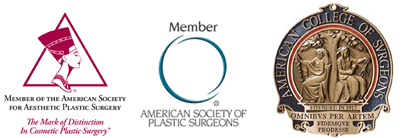The writings or blogs are posted most recently on the top. For example, patients who are reading these writings on breast lift cosmetic surgery, it is best to scroll down and start reading the writings at Wilmington Breast Lift and Breast Reduction. This would be first. The later ones are in sequence as they have been added later.
Breast lift incisions or scars are of major concern. Poor scars on the breast are, in fact, one of the major causes for law suits against plastic surgeons. Breast incisions typically heal well and fade with time, but they can heal poorly or become hypertrophic or keloidal. Poor scars can be described as raised, red, and unsightly. A woman can have an operation to make the breast prettier, and all of a sudden she ends up with bad scars. She has become “scarred”. This is never the goal, of course. Most women do not end up like this. Most women have good or excellent results with incisions that fade well. The risk that the incisions do not fade well is one of the main risks a woman must face. Medical studies and medical research have shown extremely high satisfaction rates with these operations. The medical literature would support the conclusion that these operations really work. They improve symptoms of back and neck pain, and they greatly improve the shape and attractiveness of the breast. Most women are pleased with their operation, their surgeon, and would do it again if asked. However the “Real-Reality” of these breast operations, like many operations, is that the patient and doctor take a statistical chance. This is the chance that the incision doesn’t fade, as it is expected to, after breast lift or breast reduction surgery. The incisions or the scars and how they fade are of utmost importance. Certain operations like cosmetic eye lifts almost never get bad scars. Breast lift and breast reduction surgery have a greater chance. Although this rate is still very low, I believe it is the major factor that must be discussed before surgery. If a woman hates her breasts, and she cannot stand to look at them in the mirror, then she is an excellent candidate for this type of breast surgery. She typically will love the new shape and appearance of her breasts. The incisions are a necessary trade-off. In the great majority of cases, the incisions fade very well. They never go away. However, there really is no other option besides surgery, except not having the operation. No creams, suction massage, or puppet strings will work and lift the breast. These are not reality. You live with the existing shape of the breast or have the operation. In this scenario described, where the woman cannot stand her breasts and she believes it is not a minor issue but a major dissatisfaction, then she typically will be happy with surgery. This is a patient that probably will like the results of the breast lift. The necessary trade-off of the incisions will be outweighed by the improvement in appearance, and she will feel the operation has been worth it.
In contrast to breast lift, breast augmentation or breast enlargement have very small incisions. The incision for breast augmentation is small because the implant can be “rolled up” and placed in “empty.” It is then “filled up” inside the breast under the muscle. The incision for breast augmentation is much smaller than the breast lift and has a very high rate of fading extremely well.
Women interested in breast lift, breast augmentation, breast lift and augmentation, breast lift recovery, breast lift cost, and breast lift incisions should come in for a consultation with Dr. Saunders. Please also see the breast lift before and after photos and the breast augmentation before and after photos.

